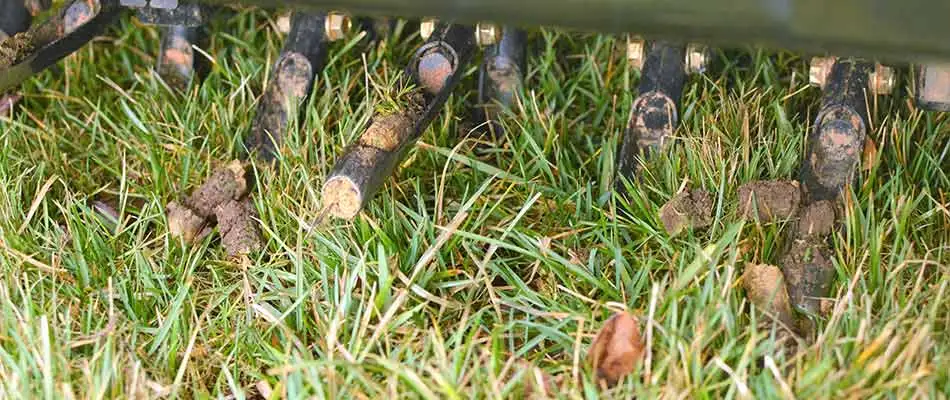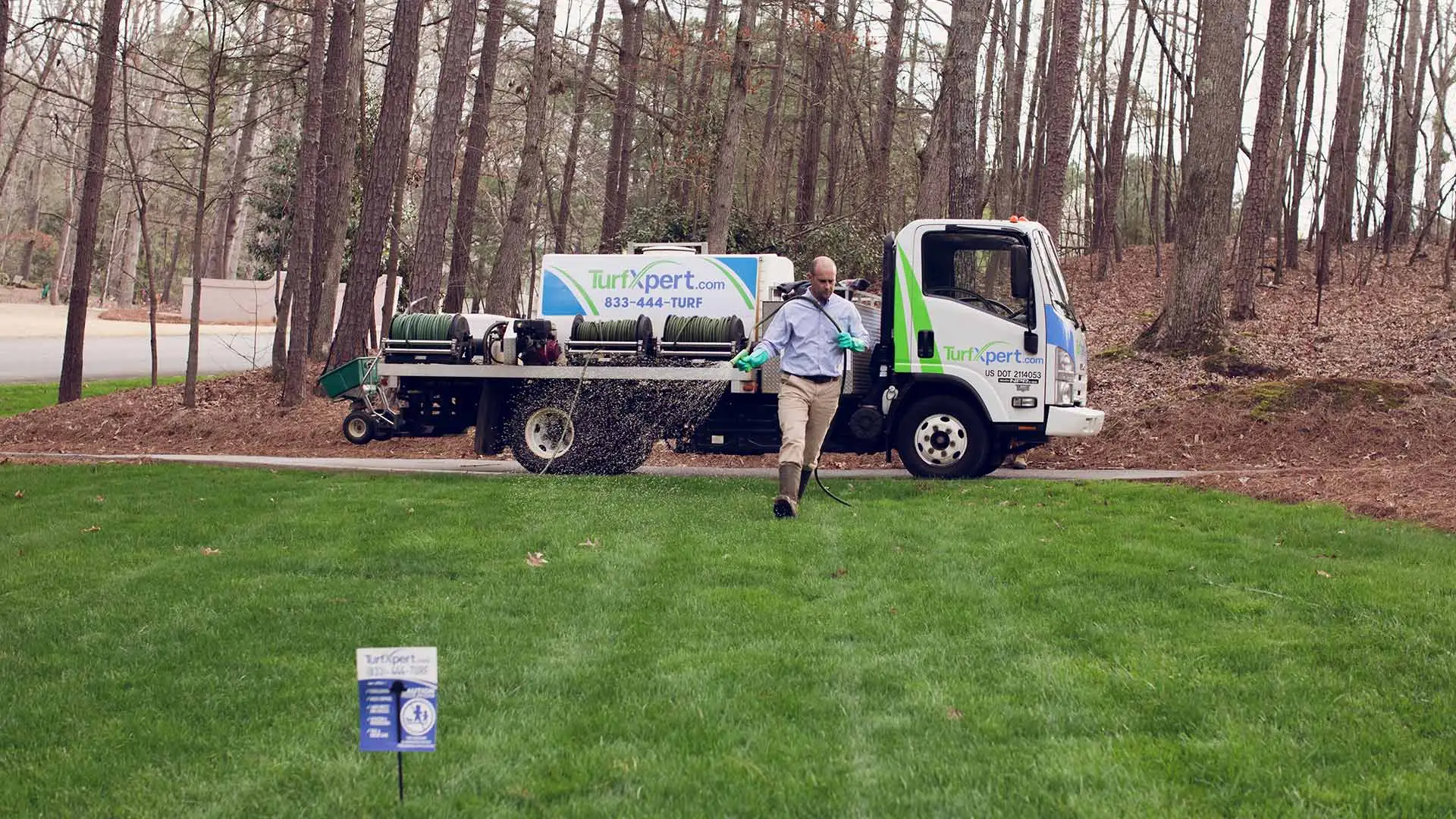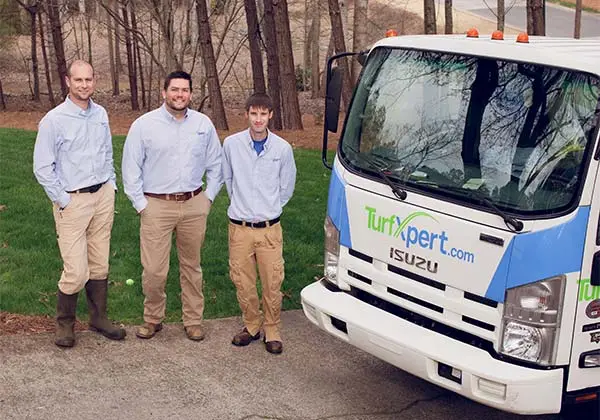A common misconception is that all grass requires the same care and treatment. Cool and warm-season grasses consist of different species of grass plants with various care requirements for healthy growth. For more information about the specific differences of each type of grass, refer back to our previous article, "Cool VS Warm-Season Grass, Part 1: What's The Difference?"
Fertilization, aeration, watering, and overseeding schedules will vary based on the type of grass your lawn has and what type of weather it thrives best in. Continue reading for a break-down of cool and warm-season grasses and their maintenance schedules.
Maintenance Schedule for Cool-Season Grasses
Learn more about our maintenance schedule services for cool-season grasses in the Greater Atlanta, Georgia area.
Fertilizing Schedule
Your cool-season grass can be fertilized in both the spring and the fall. In the spring, your turf has just endured colder weather and needs a bit of a boost for the upcoming growing season. Fertilization will ensure that all essential nutrients will get replenished in the correct amounts, giving your grass the ultimate strength and health to bounce back from winter. Once summer comes and goes, your cool-season grass will be in need of another boost from surviving the hotter weather. It will finally begin to grow again in the cool fall temperatures, so now is also a great time to give it one last boost before winter.
Aerating & Overseeding Schedules
The best time to aerate and overseed your cool-season grass is in the fall. Aeration is the process of poking many holes in your soil to give your grass roots better access to water, sunlight, and essential nutrients. You want to be doing this in the fall because your cool-season grass is at its strongest growing point and preparing itself for winter. Giving it more access to water, sunlight, and nutrients will only make it that much stronger.
Overseeding is the process of spreading seeds throughout your already existing lawn to help empty patches of grass grow thicker. This service is also best done in the fall and directly after aeration so that the seeds have a better chance of reaching your soil, germinating, and using all of that extra access to water, sunlight, and nutrients to grow as thick and strong as possible.
Watering Schedule
Cool-season grasses usually don’t require much watering to survive unless they are under extreme drought conditions. These plants have natural protective instincts to retain water during high temperatures or mild droughts. They will stop growing and temporarily discolor, only to continue growing green leaves when cooler temperatures return.
Despite protective measures, cool-season grasses need water throughout the hotter summer months. It’s best to water the lawn in the early morning or evening when temperatures have dropped. During the hottest periods of the season, lightly water the turf each week. The amount you apply should saturate the ground about an inch-and-a-half deep to be able to reach plant root systems.
Maintenance Schedule for Warm-Season Grasses
Read about how we maintain and care for warm-season grasses at properties in Woodstock, Roswell, Alpharetta, and nearby areas in Georgia.
Fertilizing Schedule
For healthy warm-season grasses, apply fertilizer once their winter dormancy period is over and their leaves have turned green. Late spring and early summer are ideal because air temperatures are usually consistently above 70 degrees Fahrenheit, making soil temperatures above 60 degrees Fahrenheit.
Warm-season grasses need multiple fertilizer treatments each year. With standard-release fertilizers, applications should occur every four to eight weeks. Slow-release fertilizers allow for more extended periods between applications.
Aerating & Overseeding Schedule

Mid-spring to summer is the right time to aerate lawns with warm-season grasses. By this time, the yard is experiencing rapid grass growth, so the plants’ roots need the water, sunlight, and nutrients that aeration provides.
Overseeding lawns with warm-season grass follows the same maintenance schedule as aeration. Soil temperatures by mid-spring should be around 65 degrees Fahrenheit, so the seeds will have a better chance of taking to the soil and sprouting seedlings.
Watering Schedule
If springtime is offering a generous amount of rain, your warm-season turf may not need watering. However, if you notice that the blades are narrow and curled, the plants may not have enough moisture to regain their green color after they emerge from winter dormancy.
Warm-season grasses are highly resilient against high temperatures, but watering the lawn in the early summer mornings will ensure that your yard remains a vibrant green throughout the season. However, be careful not to overwater the turf because excess moisture can promote harmful fungal lawn diseases.
Have any questions about your lawn's maintenance schedule? Call our experts!
Our company is a five-star lawn care company serving residential and commercial customers in the Northern Georgia area including Woodstock, Roswell, and Alpharetta. Because of our location, our experts are trained in both cool and warm-season grasses. Let us help you create an annual care plan for your lawn! Give us a call at (833) 444-8873 to schedule your consultation today.




Comments (0)
Thanks for your comment!
Thanks for your feedback! Your comments have been successfully submitted! Please note, all comments require admin approval prior to display.
Error submitting comment!
There is a problem with your comment, please see below and try again.